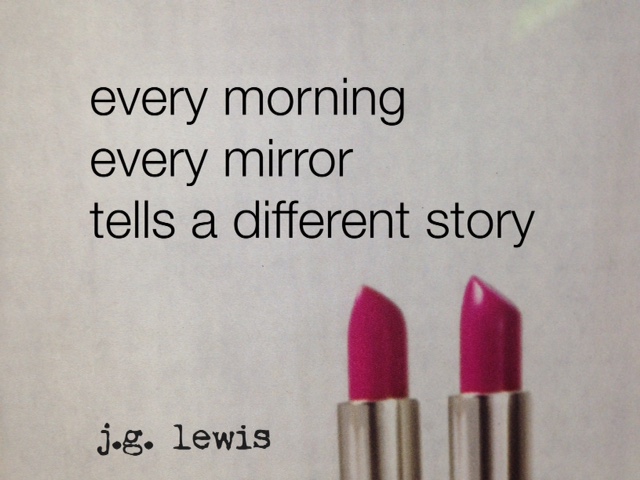Month: May 2015
It’s amazing how the written word has the power to stay with you.
We all have favorite quotes, or poems, lyrics, lines, and chunks of dialogue from stories we’ve read, which somehow become trapped in our psyche. We made a connection with the words or found value in the message; they cling to us, returning time and again.
In times of hardship, or heartbreak, the right words can cauterize a wound. Appropriate words can soothe the senses and prolong the pleasure of those moments of sheer joy or passion. The words are always there; the ones we rely on to appease our emotions and guide us through this thing we call life.
More than four decades ago, I read something that continues to come back to me. It wasn’t an epic piece of literature or classic prose, just an everyday magazine article. It was an article so well written that it has permanently changed the way I approach this one specific task.
In 1973 I broke my leg in a skiing accident and spent a few weeks recuperating at home, essentially sitting and reading, mostly in bed. My mom bought me paperbacks, and there were always newspapers around our house, and a family friend brought a couple of bags of magazines from her husband’s reception area. I read, cover-to-cover, Time, Newsweek, People and the New Yorker. I can’t totally recall the politics and personalities, but I am often reminded of an article that has always – subconsciously or consciously – had an impact on me.
The article (for the longest time I thought it was from Reader’s Digest) was titled ‘How To Eat an Ice Cream Cone’. Every time I take a lick, I remember the writer’s well-crafted instructions about the circular motions required, and the art of using your tongue to push the ice cream deeper into the cone as you progress. These practices have now become habit. I am always — always — circling the cone to prevent drips and dripping.
I write about this not because I had ice cream on the weekend, but last year I did one of those mindless Google searches we all occasionally do. I typed “How To Eat an Ice Cream Cone”. Lo and behold, I found the article, the actual article, I read all those years ago. It was not Reader’s Digest, but rather The New Yorker (a magazine traditionally dedicated to all things important). Even though I read it in the ‘70s, I still think of this article when I get one of those cravings.
Now I didn’t remember the “classic ice-cream-cone-eating stance” mentioned below (and surely now I have re-read the instructions I might well take up the posture) but so much of this article comes rushing back.
I’m not sure if I have read other pieces by L. Rust Hills (certainly none as memorable as this one), but you can tell he is a great writer; one of those writers who can take a topic, capture the scene and take you there.
Hills does more than educates and informs. A cautionary tale, the article concentrates less on the taste and texture of the flavorful delight and focuses on the nature of the product, the environmental effects on it, gravity, and the perils of incorrect consumption of both the ice cream and the cone.
I’m always in awe when a writer can take an everyday topic, or other times an operose task, and turn it into something both interesting and informative. The words sink into your memory and actually change how you act or alter your perception.
This is what all writers want to do, each time they write, using the same 26 letters everybody has access to and creating a piece that will be read and remembered. Hills succeeds, on so many levels, providing deft and dutiful instructions to a task everybody takes for granted (“Real pleasure lies, not simply in eating the cone, but in eating it right.”) You can taste the details.
All instructions, for anything, should be this complete. Can you imagine how much easier it would be to assemble a gas barbecue, or install a new laser printer, if the instructions were written better than they usually are?
I’ve attached a link to the article. Yes, at almost 1,000 words, it may appear lengthy, but as you read you may find that the time it takes to read is about the same time it takes to actually eat an ice cream. Real time. Real good.
Delicious.
“How to Eat an Ice Cream Cone” *
By L. Rust Hills
THE NEW YORKER, August 24, 1968
Grasp the cone with the right hand firmly but gently between thumb and at least one but not more than three fingers, two-thirds of the way up the cone. Then dart swiftly away to an open area, away from the jostling crowd at the stand. Now take up the classic ice-cream-cone-eating stance: feet from one to two feet apart, body bent forward from the waist at a twenty-five degree angle, right elbow well up, right forearm horizontal, at the same level as your collar-bone and about twelve inches from it.
But don’t start eating yet! . . .
READ MORE: http://www.newyorker.com/magazine/1968/08/24/how-to-eat-an-ice-cream-cone
*Reprinted without permission, but with total respect.
Note: If the link doesn’t work for you, send me an email and I’ll gladly send you a copy.
Posted on May 19, 2015 by j.g.lewisLeave a comment



